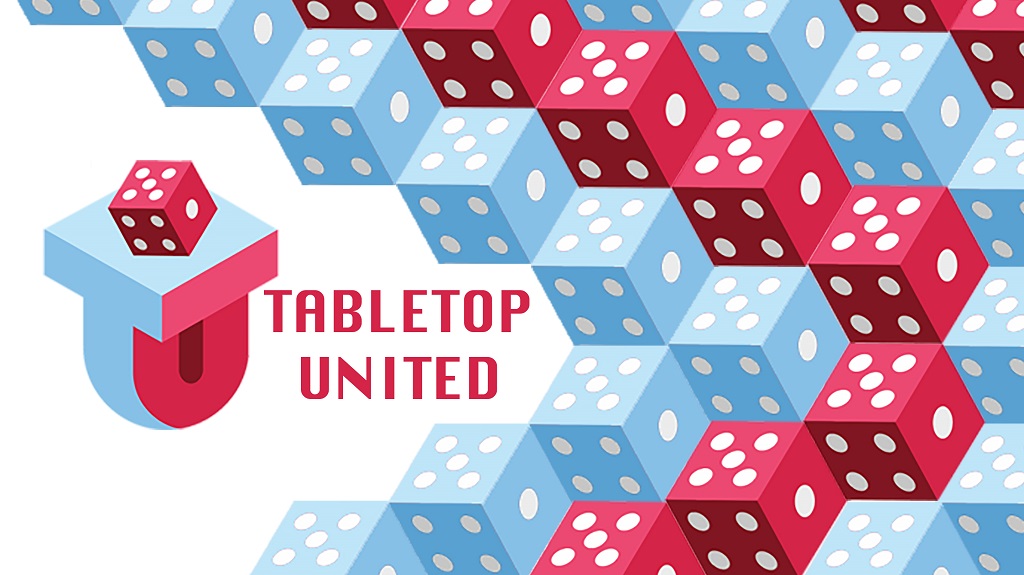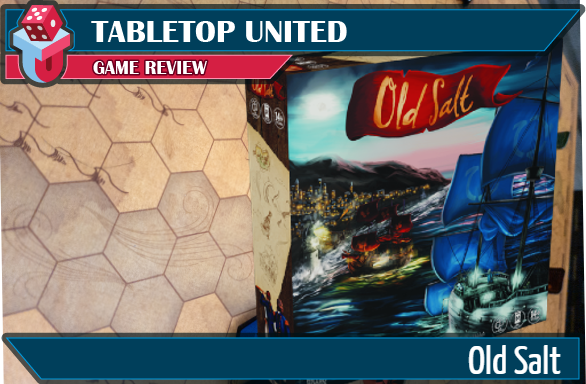Old Salt
Designer: Tim Ferry III
Artist: Jennifer Walsh
Publisher: Never Board Games
Year Published: 2022
No. of Players: 2-4
Ages: 14+
Playing Time: 25-120 min
Main mechanic / Theme: Area Majority, Player Elimination, Variable Player Powers / Naval Combat
Be a naval strategist; waging battles recounted by the Old Salts for centuries!
Find more info on BoardGameGeek.com / Kickstarter
Disclaimer: A copy of Old Salt was provided for this review.
Overview:
From the Designer: A gateway naval strategy game with no reinforcements on the way. Players take the helm of a fleet they construct at the beginning of the game to sail around the map, seize islands, and loose cannons on the enemy. The first to control 6 islands or be the last ship sailing is claimed to be the newest Old Salt and is the winner of the game.
Players can opt to play with or without faction abilities but will construct a fleet in a draft selection at the start of the game. There are 5 ship types players can choose from with limited coins to purchase ships with. On a player's turn, they have the option to sail, fire cannons, seize islands, and if playing with faction abilities will have access to 3 more unique abilities. Players can do these actions in any order as long as they don't exceed maximum sail distance (3 tiles unless sailing over tradewinds), don't fire more times than their ship's health points and have the gold to pay for what they want to do.
Players are allowed to sail up to three ships on their turn a distance of 3 tiles unless assisted by a known trade wind that grants a bonus of 2 tiles of movement. Position your ships carefully as the broadside of a ship and stern/bow impact gameplay and firing options on and off turn.
Players fire at the enemy by counting the tiles to the enemy ship and rolling that amount or more. On the die is a blank side which if rolled, results in an automatic miss. Cannons aren't perfect weapons so sometimes it's best to use faction abilities to finish off an enemy ship. When a player destroys a ship, they will take the mast off the ship they destroyed and use it in a future transaction to seize an island or turn in at the top of their turn for a bounty reward.
In order to seize an island, a player's ship must be adjacent to the island in question. The transfer of ownership costs 2 gold plus 1 gold for each enemy ship that occupies that island within the area (two tiles of the island). The player must also turn in a mast belonging to the island's current faction owner. If all costs are met and paid for, the transfer of ownership is immediate and the first to 6 islands is pronounced the Old Salt and the winner of the battle.
The faction abilities add a new level of replayability and strategy to the game as each faction has 3 abilities that are unique to them and their theme. Players can construct their fleet to offset a particular weakness of the faction or to enhance a strength of theirs. New players are encouraged to play their first 3 rounds without factions in order to gauge their comfortability before adding in the additional abilities and layer of depth this game can reach while still being excellent for those unfamiliar with the wargaming genre.
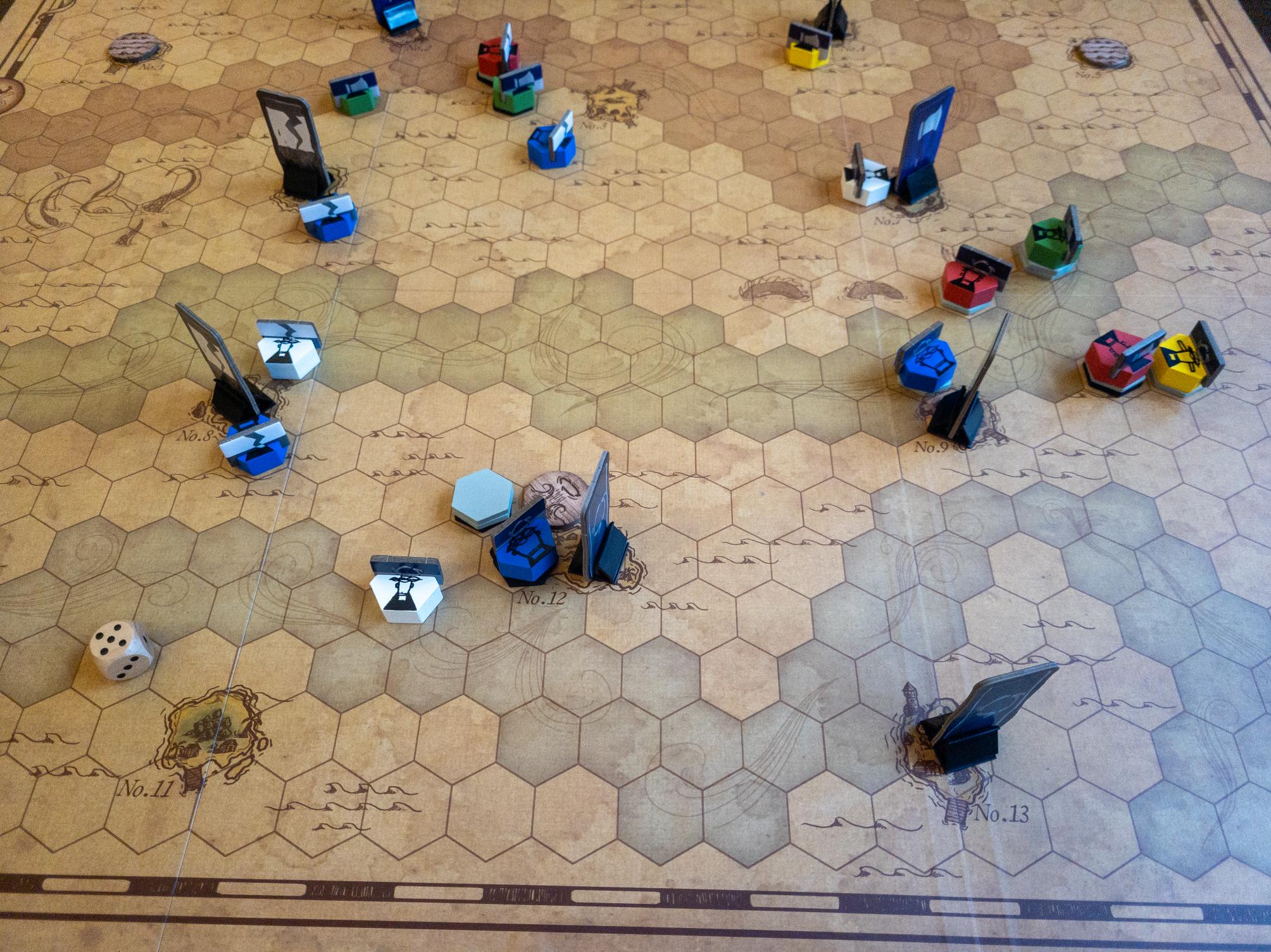
Gameplay and Mechanisms:
Old Salt is a tabletop naval wargame with a delineated play space denoted by a gameboard with (mostly) set features. The rules are fairly streamlined and straightforward for a tabletop wargame and, therefore, give some accessibility to the tabletop wargaming genre that inexperienced players may otherwise be too intimidated to try. Listing this as a 2-4 player game (there is a variation that allows for team play for games with more than 4 players), also opens the game up to more options for interested players as many tabletop war games are traditionally 2-player affairs. Each player plays an asymmetric faction with its own abilities and there are several different ships that each have their own special things that they can do. There are set “rosters” of ships for each faction or players can draft the ships that they want based on a total number of points and values assigned to each ship. Along with this being a war game, there is also an area control mechanic as you can either win by eliminating your opponents or by controlling a number of islands or have control of the most islands by the end of the last round. Actions are only limited by the amount of gold that you collect. There are some free actions and movement limitations, but other actions (including unique faction actions) cost gold to perform and as long as you have the gold, you can continue to take actions.
I do have to mention that there were several rules that we found to be a bit ambiguous that could have used more explanation, especially the actual rules for movement in regard to ship facing before, during and after movement. We determined that the ship is always facing the direction from which it entered a hex but are not 100% sure that was the correct ruling. Also, some of the faction abilities are a bit unclear. For example, Engineers - Fortify: do fortify tokens need to be destroyed before an island can be claimed? Eternals – can enemy ships fire through spaces containing Eternal ships?
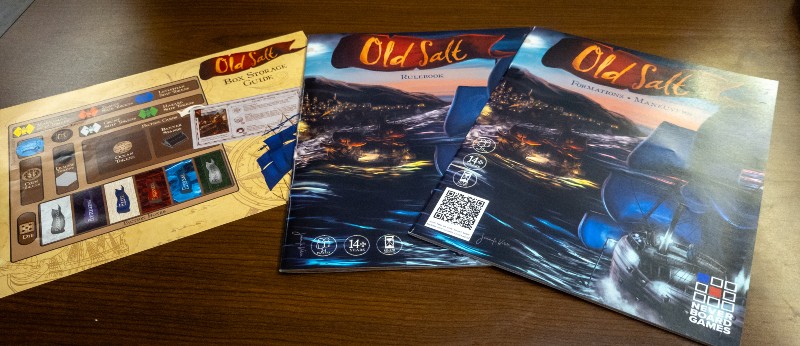
Theme, Artwork and Illustration, Graphic Design and Layout
The artwork is fairly basic and simplistic, but it works overall for the old-world, pirate-y feel of the game. I would have liked to see a bit more colorful artwork on the board, but I get that they were trying for an old naval chart-type feel. Also, several of the faction colors are pretty close together and can be difficult to distinguish on the board at times even though they also have their own symbol - maybe a brighter tone would have helped. The artwork in the manuals is also similar to other artwork in the game and while, as I previously stated, it’s a bit on the simplistic side, it’s interesting enough to enjoy. There are two manuals for the game; one that contains the actual rules and one that has variations and campaign options, which is nice for keeping things separate if you are just wanting to play the base game.
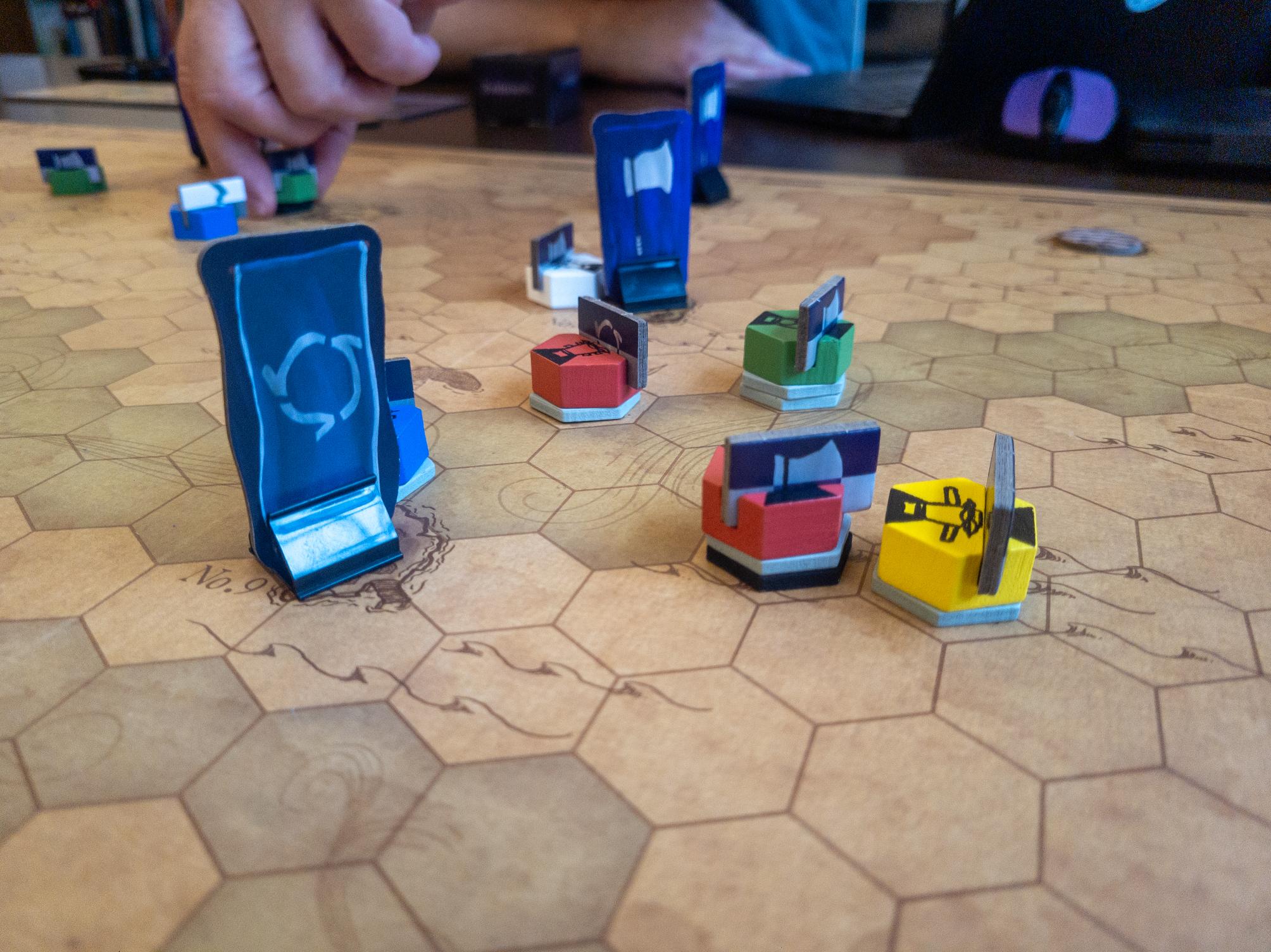
Inclusivity and Accessibility:
Tabletop United believes that diversity is a source of fun and happiness. Nurturing and celebrating our personal differences can lead to amazing gaming (and life) experiences. Therefore, TTU is putting renewed emphasis on inclusivity and accessibility in each of our reviews. This inclusivity and accessibility section will critique those issues and strengths of the subject in the review based on the unique background of the reviewer. Each reviewer views the world through their own particular lens and has a wide and varied experience from which they will write and review from.
This game varies a bit for me in terms of inclusivity and accessibility. There is some racial and gender diversity present in the faction artwork, but it could have been applied more evenly in both areas - at least there is some representation. The pieces are nice and chunky for those with motor impairments and even the cardboard tokens are of a thicker-than-usual stock making them fairly easy to pick up and hold. The different ships are of different colors that may be difficult to distinguish for those with color blindness and, although each different type of ship does have its own design emblem printed on it, these are similar enough and partially covered by the sail token placed in each ship that they are very difficult to differentiate by the symbol alone. Some of the faction color schemes are hard to distinguish from one another, especially on a busy, chaotic board, but each faction does have its own emblem that is fairly easy to identify against the other emblems.
What Worked:
I like that this game has asymmetric factions that have pretty different ways to play and succeed. Through the games that we played, most of the factions got used and I didn’t really see one that stood out as over or underpowered compared to the rest. The game is very easy to learn and play, which is a huge boon to me as a wargamer. So many war games are very complex and severely limit the player count to the point that it can be difficult to get them to the table in a regular game group situation. It’s fun, it’s fast-paced, and you get to blow each other up. What’s more fun than that?
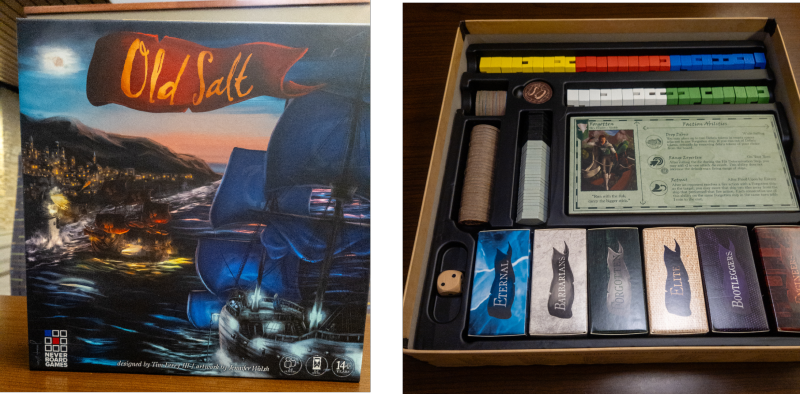
Final Thoughts:
Overall, Old Salt was a very fun, accessible tabletop wargame. Setup and teardown are fairly quick as each faction’s specific tokens are contained in their own box. I have a lot of pirate-themed games, but nothing as battle-focused as this one, so that sets it apart. I would recommend Old Salt for those who like games like Merchants & Marauders but want more combat or games like Battlelore who like a simpler tabletop wargaming experience. This could also work for people who like to play Star Wars Legion or Warhammer 40K but find it difficult to garner interest in those types of games in their gaming group. Some clarity in the rules would be helpful; even if the creators would put together an update or an FAQ it would be greatly appreciated.
I also had a bit of a problem with the faction banner tokens and banner clips. The banner tokens had varying shapes at the bottom of the banner, which is a bit unnecessary as they are pushed into a clip stand so that they can stand up. The clips are very tight and some of the banner shapes are extremely difficult to slide into the clips without damaging them (I messed up one of the pointy bottom green ones on my first attempt). The game also doesn’t supply enough clips. There are enough to claim each island on the map, but there really should be enough for each banner of each faction to have its own clip. This would eliminate the need to take the clips on and off the banners and risking damaging the banners each time.
All in all, minor quibbles aside, Old Salt is a fun game that I look forward to getting to the table again and would recommend to those who want to get a quick, easy-to-learn wargame to the table.
If you liked this review, please consider joining us on our social pages or subscribing to our newsletter:
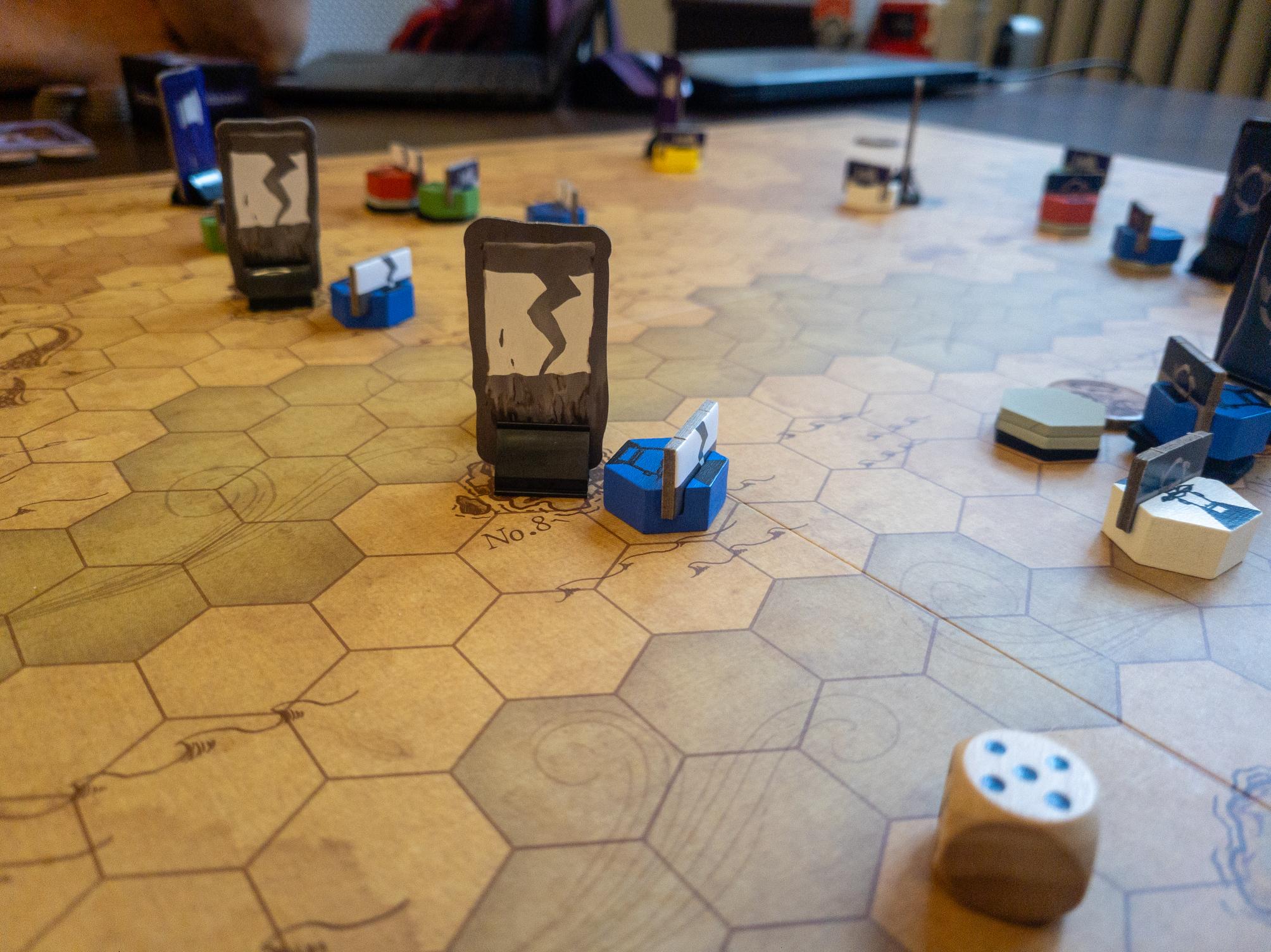
Stefan Yates

Stefan Yates is a professional at Kansas State University. Finding ways to work gaming into work, he serves on the university’s Alternate Reality Game Committee and is a co-Faculty Advisor for the Board Game Club. He is also a PhD student whose field of research is Gamification in Student Programming. He enjoys playing (and mostly losing) almost any type of game and likes to work in multiple game sessions per week whenever possible. An avid solo gamer with an additional interest in tabletop miniatures games, the stay-at-home orders of the pandemic were not particularly concerning as there was always painting to do and terrain to build. Stefan is also a book and movie collector and a huge football fan (go CHIEFS!)
